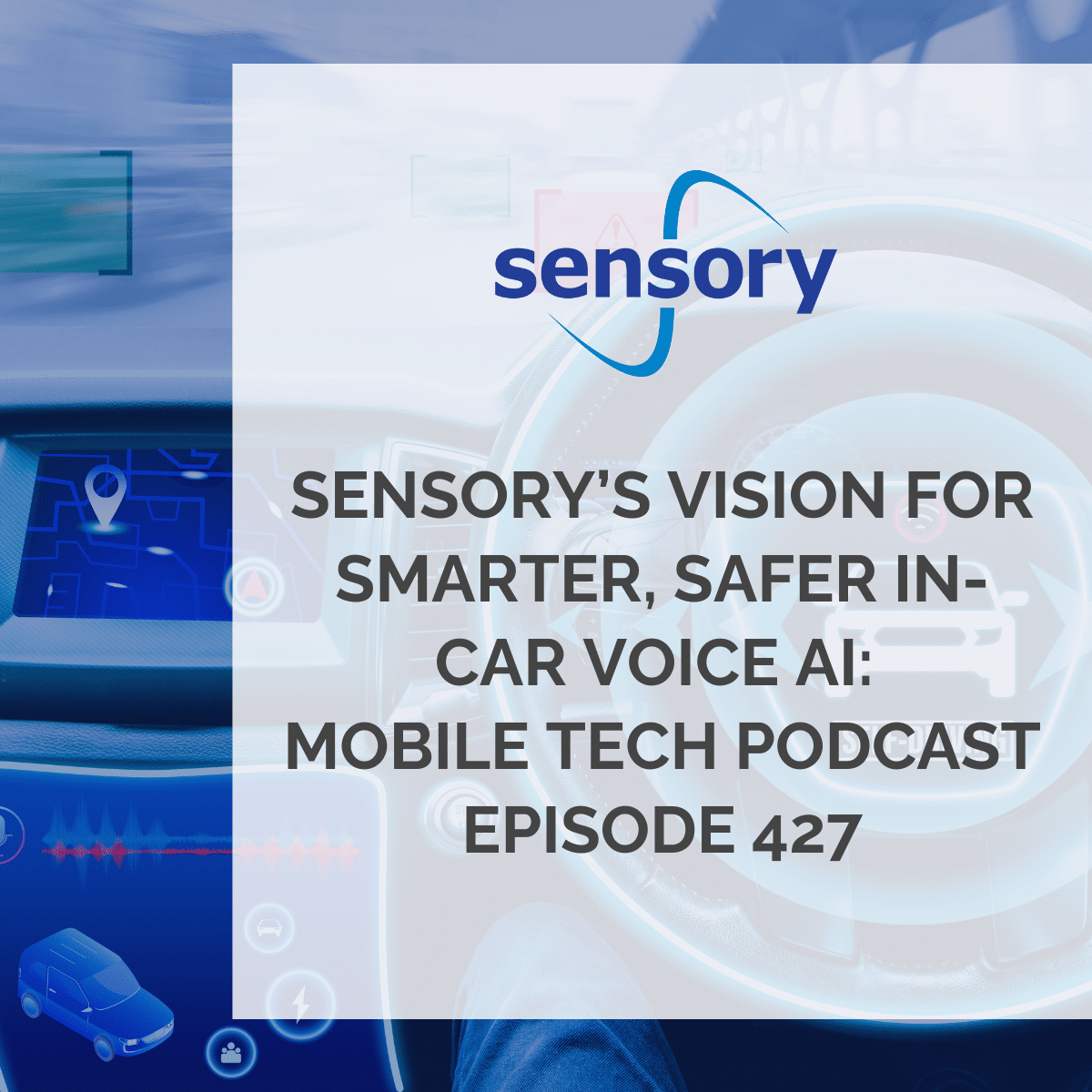In Episode 427 of the Mobile Tech Podcast, host Myriam Joire sits down with Ephrem Chemaly (MediaTek), Todd Mozer (Sensory), and tech journalist Aura López to discuss the rapidly evolving world of AI in the automotive industry. As part of a broader conversation that includes reviews of the Moto Razr Ultra, Samsung Galaxy S25 Edge, and Sony Xperia 1 VII, this discussion dives deep into how artificial intelligence is transforming the in-car experience.
Why Voice is the Future of In-Car Interaction
The panelists agree: voice is the most natural and effective user interface in a vehicle. Drivers need to keep their hands on the wheel and eyes on the road, which makes voice assistants an ideal solution. But the future goes far beyond basic commands. We’re moving toward intelligent, conversational, and personalized interactions between drivers and their cars.
Micro Language Models: Smaller, Smarter, Specialized
One of the most groundbreaking innovations discussed is Sensory’s development of “micro language models.” These models are built using the same transformer-based technologies behind large language models, but are significantly smaller and optimized for specific tasks. This makes them ideal for in-vehicle environments, where memory and processing power are limited.
“We call them micro language models… instead of requiring trillions of memory cells… we’re doing it with hundreds of millions.” — Todd Mozer, Sensory
These compact models focus on specific domains like car control to avoid hallucinations and ensure accurate responses, even without internet connectivity.
Hybrid Architecture: Processing Power In-Car and in the Cloud
The future of automotive AI is built on hybrid architecture that balances on-device intelligence with the flexibility of the cloud. Key capabilities such as wake word detection, speaker verification, and speech-to-text (STT) run directly on device. This on-device processing not only reduces latency, bandwidth usage, and cloud costs – but also improves accessibility across varied environments. A hybrid architecture also allows for swappable small or micro LLMs and domain arbitration to occur on-device, while cloud-based LLMs can be dynamically integrated for more complex tasks or personalized services. This approach keeps the experience responsive and reliable, even in low-coverage areas like remote highways or rural terrain.
Contextual Awareness: Your Car as a Co-Pilot
Using a combination of in-vehicle sensors (microphones, cameras, radar), AI systems will be able to understand not just spoken commands but also driver behavior and environmental conditions. A camera might detect that the driver is drowsy and prompt with a question like:
“Would you like me to play a different song, lower the temperature, or find the nearest Starbucks?”
This moves the assistant from being reactive to proactive—a true co-pilot experience.
Personalized Profiles and Multi-Agent Experiences
The AI assistant of the future will recognize different individuals in the vehicle using biometrics such as voice ID. Each person can have their own profile, preferences, and agent, creating a truly customized experience.
Emergency Vehicle Detection and Beyond
AI-driven audio processing can also serve critical safety functions. For instance, in-car microphones can detect sirens from emergency vehicles, providing drivers with an early alert to move out of the way. This type of innovation ties directly into driver-assistance and safety systems.
Why the Car is the Ideal AI Environment
Unlike open-ended AI use cases, the vehicle is a “bound problem” environment. The tasks are known and limited, making it easier to develop high-quality, reliable AI applications. This allows for faster iteration and more trustworthy systems. Additionally, the car offers a unique advantage: a truly captive audience. Unlike a phone or TV, which users can easily walk away from, drivers and passengers remain engaged, making the vehicle an ideal setting for hands-free productivity and deeper user interaction with AI systems.
Speed of Adoption: Faster Than Ever
Thanks to software-defined vehicles and agile development cycles, especially among Chinese car manufacturers, the panel anticipates widespread adoption of these AI features within the next two years—and possibly sooner. What once took seven years to implement now takes as little as 18 months.
The MediaTek and Sensory Partnership
MediaTek is supplying the chips; Sensory is delivering the voice software. Together, they’re bringing this vision of AI-powered driving to life. Their partnership aims to redefine what in-car interaction means—making it more helpful, conversational, and human.
Listen to the full episode: Mobile Tech Podcast 427
